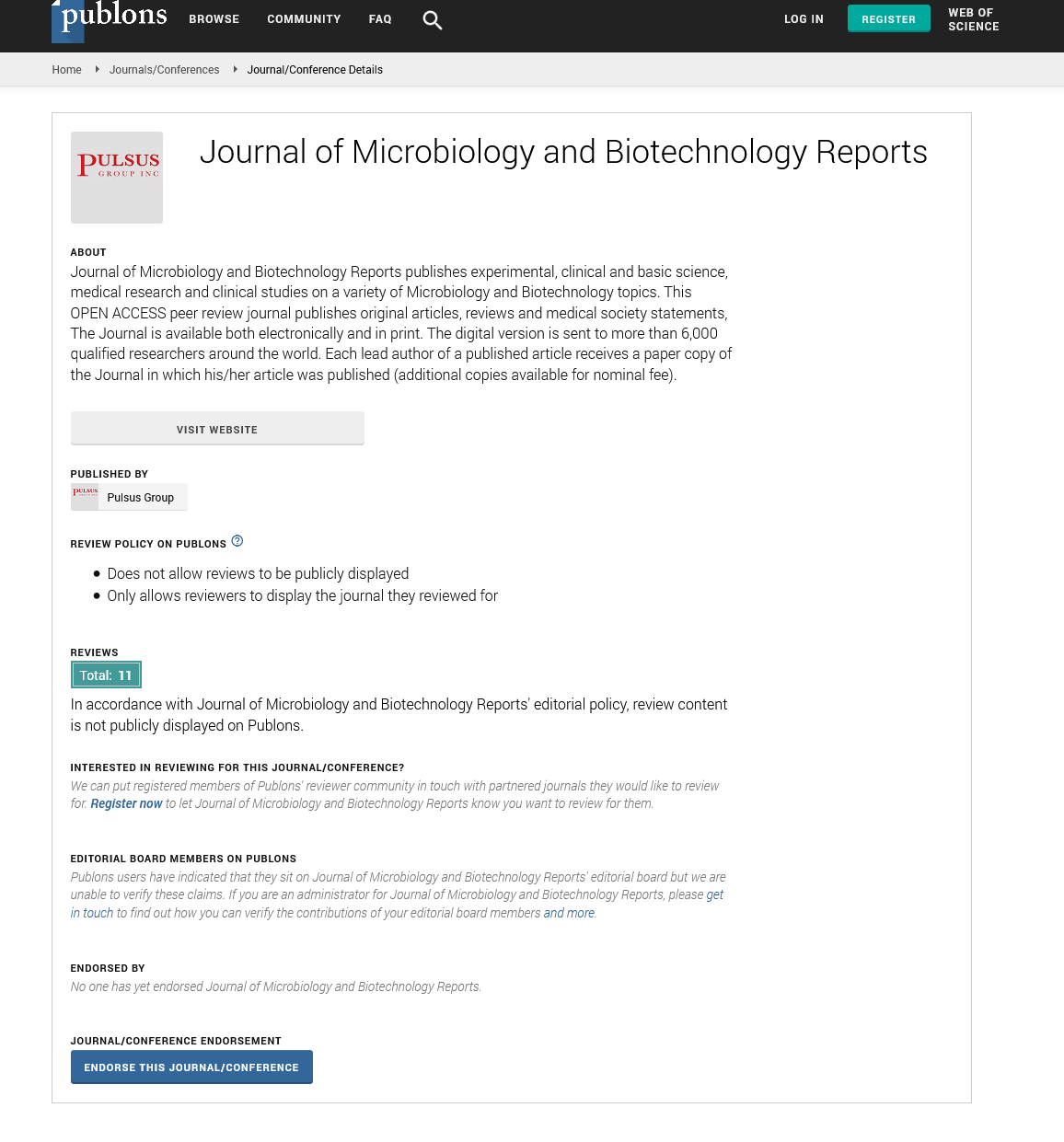Immune potency of dendritic cells matured in bioreactors in three-dimensional collagen matrices
Received: 13-Apr-2023, Manuscript No. PULJMBR-23-6352; Editor assigned: 17-Apr-2023, Pre QC No. PULJMBR-23-6352 (PQ); Reviewed: 02-May-2023 QC No. PULJMBR-23-6352; Revised: 13-Jun-2023, Manuscript No. PULJMBR-23-6352 (R); Published: 20-Jun-2023
Citation: Smith J. Immune potency of dendritic cells matured in bioreactors in three-dimensional collagen matrices. J Mic Bio Rep 2023;6(3):46.
This open-access article is distributed under the terms of the Creative Commons Attribution Non-Commercial License (CC BY-NC) (http://creativecommons.org/licenses/by-nc/4.0/), which permits reuse, distribution and reproduction of the article, provided that the original work is properly cited and the reuse is restricted to noncommercial purposes. For commercial reuse, contact reprints@pulsus.com
Description
Both ageing and space flight have serious negative impacts on the immune system, making people more susceptible to diseases. To better assist future space travel and our comprehension of the ageing immune system, we can research these impacts using simulated microgravity platforms, like the Random Positioning Machine (RPM), on Earth. DCs serve a crucial role in bridging the gap between innate and adaptive immune responses. To present antigens and build efficient T-cell responses, their unique differentiation and maturation phases are crucial. DCs, on the other hand, are primarily found in tissues like the skin and lymph nodes. As of now, no research has successfully examined how RPM affects DCs in their natural microenvironment as they age. We may explore the effects on DCs in more physiologically appropriate microenvironments using 3D biomimetic collagen hydrogels. In this study, we used an RPM to simulate an accelerated ageing model to examine the impact of loose and dense culture matrices on the phenotypic, function, and transcriptome profile of immature and mature DCs.
Among the most significant is weakened immunity. An immune system's increasing vulnerability to bacterial and viral infections is a telltale marker of ageing. In a similar vein, it has long been known that astronauts' immune systems are weakened after returning from spaceflight due to a variety of physiological stressors, most notably microgravity (G). Therefore, research into the effects of G on the immune system will not only help future, longer-duration space missions by enabling de novo countermeasures, but it has also been widely acknowledged that such research will help us comprehend our immune system as we age here on Earth.
The most pertinent in vitro biological studies would be those carried out during orbital space missions. The effects of the several environmental stressors connected to space missions, however, will combine to produce repercussions that are irreversible. Researchers created platforms on Earth that replicate various stressors from the space environment separately since studying life in space was and is expensive and hard. Different platforms on Earth may replicate (simulate) or duplicate G, with each platform having a different capability in terms of G magnitudes and exposure times that span from seconds to months. Dysregulation of Dendritic Cells (DCs) may contribute to the immune response's attenuation in the elderly or astronauts. The integration of the innate and adaptive immune systems depends heavily on DCs. The most effective Antigen-Presenting Cells (APCs) of the innate immune system are Dendritic Cells (DCs), which present processed foreign peptides on MHCs to activate cells of the adaptive immune system. Therefore, the previously noted insufficient immunological potency could be caused by deregulation of DCs or their immune functions.
While limited understanding has been gained through in vitro space biology experiments, these studies mostly focus on cells in 2D environments. The catch is that in vivo states are not adequately mimicked in petri dishes. Immune cells in particular have been discovered to be sensitive to changes in the biophysical cues found in their milieu, and 3D cell culture models have recently become increasingly used to better simulate a cell's original microenvironment. Using biomimetic 3D cell culture models will provide researchers a better understanding of how G affects DCs because they are largely tissue-resident cells rather than blood cells.
The immune system is known to be negatively impacted by ageing in a manner similar to how it is impacted by exposure to microgravity. In order to recapitulate and speed up the consequences of aging, it is becoming more and more useful to simulate the effects of microgravity on cells.
We are unable to investigate the effects of microgravity on cells found in human tissue, nevertheless, because to the difficulty and ethical issues with obtaining samples. We recently demonstrated that tissue-resident immune cells may mimic their original milieu in 3D biomimetic models, negating the requirement for animal models or invasive donor cell retrieval. Notably, even in denser biomimetic microenvironments, we saw fewer overall alterations in mDCs at the protein and transcriptome levels than in iDCs. We hypothesise that this is because mDCs are less "plastic" than iDCs when they reach the lymph nodes for T-cell interactions since they have developed more fully than iDCs after 3 days of culture. DCs are mechanosensitive to their biophysical context, to emphasise. For instance, increased fluid shear pressures and physical contact with lymphatic channel endothelial cells have been demonstrated to biophysically modify the immunological profile of mice DCs migrating from peripheral organs to lymph nodes.
In conclusion, RPM conditioning of DCs cultivated in biomimetic 3D collagen hydrogel matrices causes noticeable modifications in the expression of surface markers, the release of cytokines, cellular activity, and gene expression. RPM conditioning may cause organoid systems and in vitro cell culture to age. Since animal models are typically employed as a tool for such aged investigations, our approach presented here can be used as a replacement approach to decrease the requirement for in vivo ageing studies.





